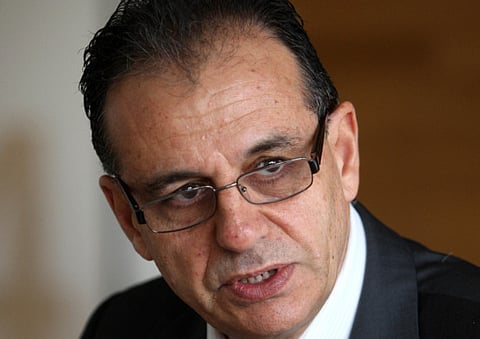UAE’s banking sector returns to a strong growth trajectory, says IIF
Soundness indicators of banking system have further improved this year

Dubai: The first quarter data from the leading UAE banks indicate that the banking system in the country has turned around with strong rebound in profitability; decline in non-performing loans (NPLs) and asset growth, Garbis Iradian, Deputy Director of Institute of International Finance (IIF), told Gulf News in an interview.
IIF, the Washington based global association of financial institutions, recently said the soundness indicators of the UAE banking system have further improved this year with strong improvement in capitalisation levels, increase in profitability and further easing of liquidity situation. The 2013 full-year results showed the UAE banks showed an average year-on-year increase of 14 per cent in net profits while the first quarter profits of banks show a strong improvement in profitability.
“The largest eight banks, which account for more than 80 per of the total assets of the banking system have recorded impressive growth in the first quarter of 2014 with profits increasing by 21 per cent on average, year-on-year,” said Iradian.
The NPLs –to-total loans ratio is estimated to have declined from the peak of 8.7 per cent in 2012 to 8.1 per cent in 2013 and is projected to decline further to 7.4 per cent for the full year 2014, according to IIF forecast.
The total and specific provisions are seen adequate in the current circumstances is expected to be 100 per cent and 80 per cent of NPLs, respectively, by the end of this year as loans to deposit ratio down at 91 per cent.
“The outlook for the UAE banks in 2014 remains favourable, supported by robust non-hydrocarbon growth, low interest rates and a further increase in real estate prices,” said Iradian.
The IIF has forecast 11 per cent growth in loans and deposits each, with provisions remaining stable and NPLs declining further to 7.4 per cent.
“Most of the asset quality issues are linked to the property sector, which has been recovering rapidly recently. If some of the loans to Dubai World, one to the Dubai’s main stateowned holding companies are reclassified as performing, then the NPL-to-total loans for the UAE would fall to around 6 per cent in 2014,” he said.
The IIF expects loan growth to moderate this year. Growth in loans to the private sector and GREs grew by 13 per cent last year. “We expect the loan growth to come down to 10 per cent this year due to central bank regulations relating to exposure to real estate sector and GREs. We also expect a number of companies tapping capital markets to meet their financing needs,” said Iradian.
Macroeconomic fundamentals
The IIF expects the banking sector to benefit from the strong revival in the UAE’s macroeconomic fundamentals. The UAE is a regional hub and has benefited from its status as a safe haven since the Arab turmoil began in early 2011. Non-hydrocarbon real GDP growth in the UAE continues to show solid expansion, at about 4 per cent. Trade, retail sales, and tourism continue to register strong growth. In addition, the real estate and construction sector have shown recovery in 2012. Most of Dubai’s government-related entities have been successfully restructuring and refinancing their maturities.
“UAE banks are now in a stronger position than in 2008 to withstand external shock. The real estate market in the UAE appears to have bottomed out, and has started to recover in certain parts of Dubai,” said Iradian.
Although Dubai’s outstanding debt of $130 billion is at 132 per cent of its GDP, the IIF said timely refinancing deals have eliminated the uncertainty about Dubai’s ability to service debt which has improved the confidence of the banking sector.
Amidst the strong positive indicators, according to the IIF, the medium-term outlook of the UAE’s banking sector depends on the pace of global recovery and on the progress achieved on financial and institutional reforms, including the rehabilitation of bank balance sheets, restructuring of the non-banking financial sector, tangible improvements in corporate governance and transparency, and strengthening of federal fiscal and monetary institutions.
Sign up for the Daily Briefing
Get the latest news and updates straight to your inbox



